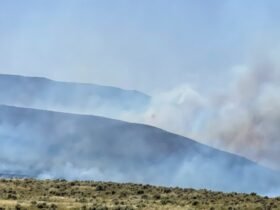The development of such radars is important to detect plasma bubbles
Chinese scientists have used advanced radar to detect simultaneous plasma bubbles over the Egyptian pyramids and the Midway Islands, sparking fascination. The radar, known as the Low Latitude Long Range Ionospheric Radar (LARID), was developed by the Institute of Geology and Geophysics under the Chinese Academy of Sciences and was installed last year. South China Morning Mail reported. The LARID radar can detect plasma bubbles, an unusual weather phenomenon that disrupts satellite communications and GPS by disrupting the charged particles of the ionosphere.
On August 27, the Chinese Institute of Geology and Geophysics announced the largest radar detection of plasma bubbles to date, caused by a solar storm last November. The radar signals, observable from North Africa to the central Pacific Ocean, allowed scientists to observe the formation and movement of plasma bubbles in unprecedented detail.
Located on Hainan Island, the LARID radar has a range of 9,600 km, from Hawaii to Libya. Unlike conventional radars, LARID uses powerful electromagnetic waves that bounce between the ionosphere and the ground and detect targets beyond the horizon. The radar system, operating at 8-22 MHz, uses 48 transceiver antennas to detect plasma bubbles, while the all-digital phased array system allows real-time adjustments.
Initially, LARID’s detection range was 3,000 km. The radar’s detection range has tripled to 9,600 km in less than half a year, thanks to operational experience and improvements such as new signal coding and geophysical simulation models.
The development of such radars is important to detect plasma bubbles as they pose a significant threat to modern warfare. However, the scarcity of large-scale, long-term observation facilities over the oceans has hampered our understanding and early warning ability. To address this, Chinese scientists have proposed setting up a network of three to four LARID-style over-the-horizon radars in low latitudes around the world.
The Chinese military has also deployed over-the-horizon radars, similar to LARID, which have detected targets such as F-22 stealth fighters, indicating more advanced, higher-resolution variants for military use.













Leave a Reply